If you have recently had lip filler injections and noticed that your lips look lumpy or uneven, you may be dealing with migrated lip filler. Fortunately, there is a way to massage the filler and help it settle back into place. In this article, we will provide you with a step-by-step guide on how to massage migrated lip filler for the best results.
Contents
What is Migrated Lip Filler?
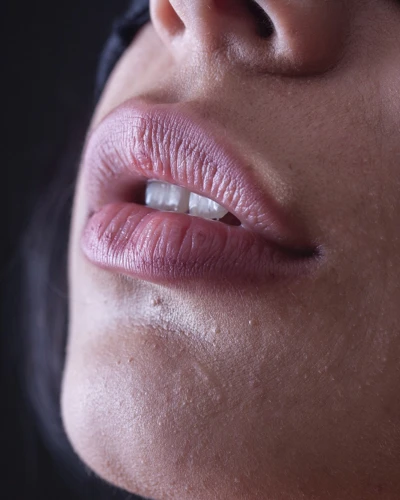
Migrated lip filler is an unfortunate consequence of lip augmentation procedures. It occurs when the lip filler, usually made from hyaluronic acid, moves from its intended injection site and travels to other parts of the face. This can result in an uneven or lumpy appearance.
Common signs of lip filler migration include:
- Uneven lip contours
- Lumps and bumps in the lip area
- Unnatural shapes of the lips
- Misaligned or asymmetrical lips
If lip filler migration is left untreated, it can cause discomfort and may even lead to more serious issues such as infection or abscesses. Fortunately, there are several ways to rectify this condition, including massage. Massaging the affected area can help to break down the filler and redistribute it evenly. This can help to reduce the appearance of lumps or bumps and restore the lips to their natural shape.
When it comes to treating lip filler migration, it is important to note that massage should be done gently and carefully. Using too much pressure can cause the filler to move further away from the intended area and worsen the appearance of the lips. Therefore, massage should always be done with caution and done as part of a plan prescribed by a medical professional.
Reasons for Lip Filler Migration

Lip filler migration occurs when the filler is injected incorrectly or the filler has been injected too deeply into the skin, leading to a shift in the filler. Other causes of lip filler migration include:
| Cause | Explanation |
|---|---|
| Incorrect Filler Placement | If the filler is injected too deeply into the skin, the filler may spread to other areas. |
| Allergic Reactions | Allergic reactions can cause lip filler to migrate or change its shape or size. |
| Incorrect Injection Technique | If the filler is injected too quickly or too forcefully, it can cause the filler to migrate. |
| Infection | Infections can cause the filler to migrate and change its shape or size. |
| Aging | Aging can also cause the lip filler to migrate, as the skin loses its elasticity. |
Understanding the causes of lip filler migration is essential for preventing and treating the condition. By taking the necessary precautions and using the correct techniques, you can ensure that your lip filler is properly placed and will last for the desired amount of time.
Pre-Massage Considerations
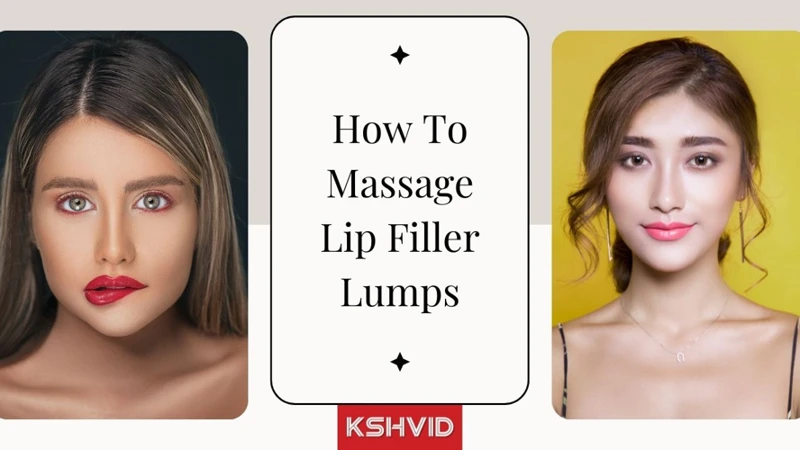
1. Check with your doctor: Before attempting to massage lip filler, it is important to check with your doctor and ensure that it is safe and appropriate for you to do so.
2. Choose an appropriate time: Choose a time when you will not be rushed or disturbed, and when you can ensure no one else is touching your face.
3. Prepare your skin: Gently cleanse your face with a mild cleanser and warm water. Pat your skin dry and apply a light moisturizer.
4. Select the right materials: Select two clean washcloths, a gentle massage cream, and a warm compress to complete the massage.
5. Relax: Take a few moments to relax, close your eyes, and take a few deep breaths. This will help you to be more relaxed and therefore more effective during the massage.
Step-by-Step Guide to Massage Migrated Lip Filler
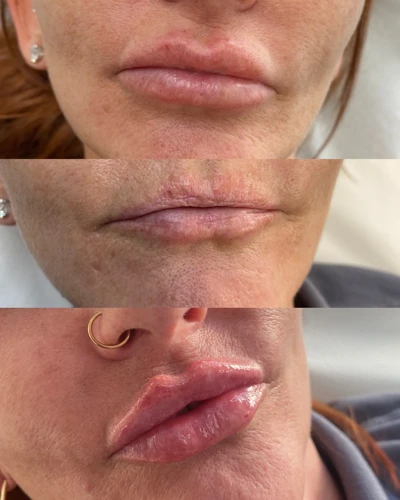
Step 1: Clean your hands thoroughly with soap and water and make sure the area around the lips is clean.
Step 2: Apply a thin layer of topical numbing cream to the area to be massaged.
Step 3: Wait at least 15 minutes for the numbing cream to take effect.
Step 4: Gently massage the filler in a circular motion for about 5 minutes.
Step 5: Use a warm compress to help reduce swelling.
Step 6: Apply a cooling gel to help reduce inflammation and discomfort.
Step 7: Avoid direct sun exposure and any strenuous activities for at least 48 hours after the massage.
Step 8: Follow up with your doctor if you experience any adverse reactions or side effects.
Benefits of Massaging Migrated Lip Filler
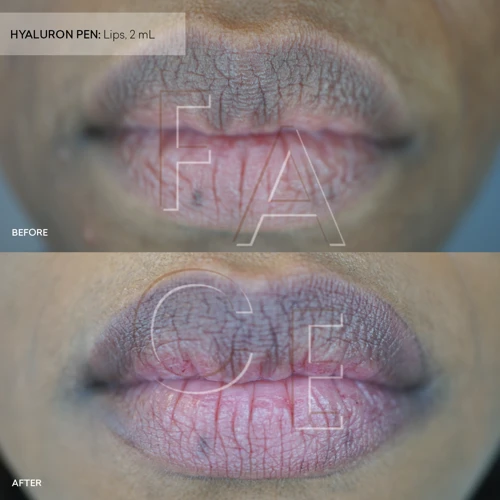
Massaging migrated lip filler can help prevent further migration, reduce lumps and bumps, and improve the overall appearance of the lips. By massaging the area, the filler is redistributed evenly, resulting in an aesthetically pleasing outcome. Additionally, massaging can help reduce the risk of infection, as it allows the filler to spread more evenly and reduces the chance of clumping. It can also help reduce the risk of complications such as hematomas and granulomas.
Relaxation is another benefit of massaging the area. Massaging can help reduce stress and tension, while also providing a soothing effect to the area. This can help improve overall lip health and boost the patient’s overall wellbeing.
Pain relief is also a benefit of massaging migrated lip filler. Massaging the area can help to reduce swelling and alleviate any discomfort caused by the filler. Additionally, it can help to increase circulation, which can help reduce pain and inflammation.
Improved results is another benefit of massaging migrated lip filler. Massaging the area helps to spread the filler more evenly, resulting in a more natural-looking outcome. It can also help to reduce the risk of complications and ensure the best possible results.
Potential Risks of Massaging Migrated Lip Filler
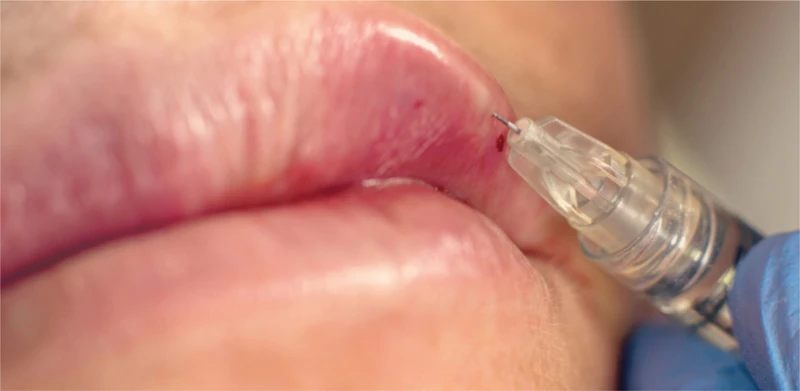
1. Infection: Massaging migrated lip filler can lead to infection if proper sanitization is not taken by the practitioner.
2. Skin Damage: If the massage is done too aggressively, it can lead to skin damage, including bruising, swelling, and redness.
3. Allergic Reactions: Massaging migrated lip filler can cause an allergic reaction to the filler material, resulting in skin irritation, rashes, and hives.
4. Embolism: Massaging migrated lip filler can cause an embolism, a potentially serious medical condition in which a blood clot or air bubble travels through the bloodstream and blocks a blood vessel.
5. Nerve Damage: Massaging migrated lip filler can cause nerve damage, resulting in pain, numbness, and tingling in the injected area.
6. Migration: Massaging migrated lip filler can cause the filler to migrate to other areas of the face, creating an uneven appearance.
When to Seek Professional Advice
If you feel that the filler has migrated out of the intended area, or if you experience any pain or swelling, seek professional advice from your doctor or nurse as soon as possible.
| Symptom | Action |
|---|---|
| Pain or swelling | Seek professional advice |
| Filler migration | Seek professional advice |
| Filler lumps | Massage the area |
Frequently Asked Questions
Is Massage of Migrated Lip Filler Painful?
Yes, massage of migrated lip filler can be painful. It is recommended to perform this massage with caution and light pressure. Here are some tips to make the massage more comfortable:
- Avoid massaging the lip filler directly and use a gentle patting motion instead.
- Use a moisturizing lip balm before the massage to reduce friction.
- Apply a cold compress to the lips after the massage.
- Use a numbing cream before the massage to reduce pain.
- Consult a professional if the pain persists.
Though the massage may be painful, it is important to perform it regularly to reduce the likelihood of lip filler migration.
Are there any Side Effects Associated with Massage of the Lip Filler?
Though massage of the lip filler is generally safe, there is a risk of some side effects, such as bruising, swelling, and discomfort. Additionally, there is the potential for the filler to migrate away from its desired location and cause an unnatural appearance. To avoid these risks, it is important to be gentle and follow the professional’s instructions.
How Often Should I Massage the Migrated Lip Filler?
It is recommended to massage the migrated lip filler twice a day for 10 minutes each time, for 5 to 10 days. It is also important to keep the lips hydrated and moisturized to help the filler absorb into the correct area. Massaging the filler too vigorously can cause further migration, so it is important to do it gently and consistently.
How Long Should I Massage the Migrated Lip Filler For?
The massage technique should be done for 2-3 minutes, up to 5 times a day for 3-5 days. After the massage is done, apply a cold compress for 10-15 minutes to help decrease swelling. It is important to not over massage the area, as this can further aggravate the filler.
Are there any contraindications to massage of the lip filler?
Massaging migrated lip filler should be done with caution, as there are certain contraindications that should be taken into consideration.
- Patients with allergies to hyaluronic acid-based fillers should not massage their lip filler.
- Patients who have had a cold sore in the past should not massage the lip filler, as this could cause a recurrence.
- Patients who have experienced a reaction to a filler in the past should not massage their lip filler, as this could cause further irritation.
- Patients taking blood thinners or other anticoagulants should not massage the lip filler, as this could increase the risk of bleeding.
- Patients with any existing medical conditions should consult their doctor before massaging their lip filler.
It is important to note that these contraindications should be taken into consideration before beginning any massage of the lip filler. If any of the above conditions apply, it is advisable to seek medical advice before attempting to massage the lip filler.
Conclusion
Massaging migrated lip filler is a safe and effective way to improve the appearance of lips. When done correctly and regularly, it can help reduce discomfort, redness, and inflammation, and reduce the risk of complications. It is important to consult with a qualified medical professional before attempting any kind of massage, and to follow the step-by-step instructions provided in this guide.
References
- Regnault, S. (2019, August 22). Massage for Softening Lip Filler. Retrieved from DovePress.
- Cosmetic Injections: Side Effects and Complications. (n.d.). Retrieved from U.S. Food & Drug Administration.
- Injectable Dermal Fillers. (2017, May 1). Retrieved from American Academy of Dermatology.

